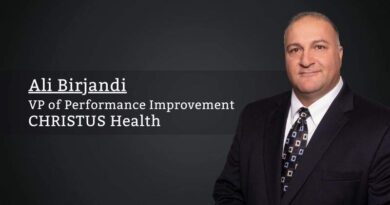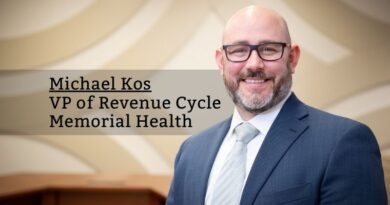Collect like nobody’s listening… accept Artificial Intelligence.
By Marti Strand, VP Revenue Cycle, St Joseph’s Candler
The number one problem in the revenue cycle is that we have a communication gap with insurance payers that make us feel like nobody’s listening.
We communicate through data files, CARC, and RARC codes that require a crosswalk to get summary denial information. We troll numerous payer websites to find the rest of the information needed to get paid. But even more frustrating are the lengthy phone calls to status 5 accounts at a time. Let’s not forget forms and medical records requiring time and labor. Perhaps the biggest mystery is how we still get millions of dollars in eligibility denials despite expensive eligibility tools with quality edits. The task to hire and train staff for entry-level employee is never-ending.
The good news is we are seeing the light at the end of the tunnel, and for once, it’s not a train! Artificial intelligence pulls together communications from multiple sources and allows us to work by exception. AI can also interact inside even the most basic of core systems and ultimately reduce the number of “bolt-on” tools needed. The ability to extract large volumes of data from the internet in seconds and mold it into a new workflow makes the possibilities limitless.
So what solutions might AI provide to improve our performance? How about virtual registration? COVID19 has already shown the need for virtual registration. The challenge in this workflow is choosing the right insurance, in the right order, and linked to the insurance master. Even better, could we “push data” to the patient to verify and work only variances? Can this method help us reduce costs by eliminating expensive decentralized registration areas while improving quality?
Scheduling departments are already benefiting from AI. We can now compare our full schedule to payer websites daily and locate those cases missing precerts or not in the scheduled date of service due to rescheduled services. Proactively sharing scheduling variances with referring physicians also help us avoid late cancelations. It is even possible to initiate a precert using bots to complete online payer templates.
The business office also benefits from AI. It is now possible to work directly in our core system utilizing “manual tasking functionality” and route work to the best person to resolve the issue. Finally, with denial data and payer websites responses uploaded into our system, we are able to resolve the claim without accessing multiple payer websites.
Locating millions of dollars in high-cost drugs is another improvement area. The AI workflow finds the best foundation for the patient from 10,000+ websites, submits the application, and logs the approval. It even includes automation for Medicaid and Charity applications with limited labor.
As always, the key to success will be the people’s ability to embrace a culture of process improvement. In the end, “collecting like nobody’s listening” means reducing the complexity of healthcare, gaining focus on what is truly value-added, and learning how to simplify communications with payers. The possibilities to work smarter are endless. Improving net revenue while reducing cost makes AI strategies definitely worth listening to!



